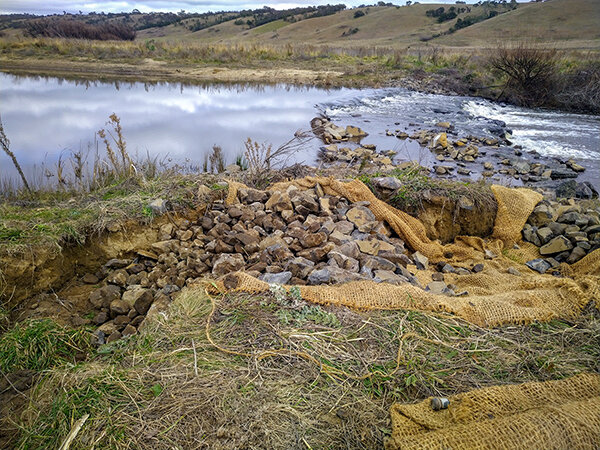My name is Nick Bassett, and I’m in my final year at the University of Sydney, studying a Bachelor of Science/ Bachelor of Advanced Studies (Agriculture), majoring in Plant Production, and Soil Science and Hydrology (yes, it’s a bit of a mouthful!). I’m also in my Honours year. My research project is a field and plot trial investigating the use of applying gibberellic acid (a natural and important plant hormone that promotes stem and leaf elongation) to increase the growth of common summer and winter pastures, and in turn, to begin to restore soil carbon in depleted cropping soil through increased biomass growth and soil respiration activity.
My interest in regenerative agriculture began with a first-year university field trip to the Central West of NSW, where a member of the Australian Institute of Ecological Agriculture (IEA) introduced us to this new form of thinking. I was also made aware of Charles Massy’s book ‘The Call of the Reed Warbler’, which certainly explained what he was talking about. I was drawn to this new way of thinking into how we manage out agricultural landscapes because I could already see the effects of our traditional management practices of Australia’s unique environment. I don’t come from an agricultural background. I’m from suburban Sydney and was lucky to be able to study agriculture at high school. It’s also been said to me on multiple occasions that I have “fresh eyes” and few ingrained preconceptions as to the proper way how we manage our land.
Rebuilding a rock baffle at Duralla along Mulloon Creek.
Photos: Max Brunswick.
I was first introduced to the Mulloon Institute (TMI) through the ABC programs ‘Australian Story’ and ‘Landline’ that explored the successes Tony Coote and the TMI team had in regenerating a degraded landscape and improving the health of Mulloon Creek. I thought TMI would be a really interesting place to complete my work placement/internship for the professional development component of my degree, as I could already see the benefits of what places like TMI were doing.
I predominantly spent my time working with the research team of TMI as part of the Mulloon Rehydration Initiative (MRI)*. Working with Hydrologist Tony Bernardi, Research Coordinator Luke Peel and Science Officer Ira Dudley-Bestow, I assisted with the maintenance and collection of groundwater and soil moisture data from the multiple gauging stations across the Mulloon Creek catchment and private farms participating in the MRI. Driving around the catchment with Tony, Luke and Ira, I was able to observe the scale of the landscape rehydration project: 50 leaky weirs and counting, and dozens of gauging stations, across four different farms. It became obvious to me the success that TMI has had, from the praise from other farms across Mulloon North and Palerang, about how the project and research has benefitted them economically and environmentally, and the long term relationships that have been established.
Leaky weir structure DM6 at Duralla.
I also worked with Technical Officer Max Brunswick, who is responsible for building and maintaining the many leaky weirs across the catchment. Walking along the creeks with Max, it was really worthwhile to learn how these structures are built in the first place given the importance they play in rehydration. What immediately stuck out to me was the extent by which the weirs were able to raise the water level. In some situations, this could easily have been over 75 cm. Multiplying this across each weir upstream, you can imagine, not just how much is now being held back (especially at this time as the drought breaks), but at how much higher the water level would be only a couple of hundred metres upstream. No activity that I had to do was particularly difficult but dealing with the winter wind of the Southern Tablelands certainly served as a challenge!
This leaky weir (DM6) at Duralla would easily have raised the water 50cm high upstream.
As someone who is keeping their options open as to where they go next after university, doing my placement with the Mulloon Institute has been a fantastic, and very much worthwhile experience. Observing the success that landscape rehydration has had on this environment, there has certainly been a positive impact on the productivity of this farm and the relationships with other farms in the Mulloon catchment. For any student studying agriculture, environmental science or any other discipline, I would highly recommend doing a placement at the Mulloon Institute. If you are someone like me who still isn’t sure where they like to go after university, learning about regenerative agriculture and landscape rehydration at TMI will give you a great introduction into a newer aspect of Australian agriculture and a positive outlook as you begin to sense that there is a better way of doing things into the future.
* The Mulloon Rehydration Initiative is jointly funded through the Mulloon Institute and the Australian Government’s National Landcare Program. The initiative is also assisted by the NSW Government through its Environmental Trust.
The Mulloon Institute welcomes internships and placements that can be designed and resourced primarily through the applicant’s respective tertiary institution and/or employer. We can then look at facilitating the research project if it aligns with our goals and our work on the Mulloon Rehydration Initiative. If this sounds like you, then please get in contact via info@themullooninstitute.org with your proposed idea for a research project.



